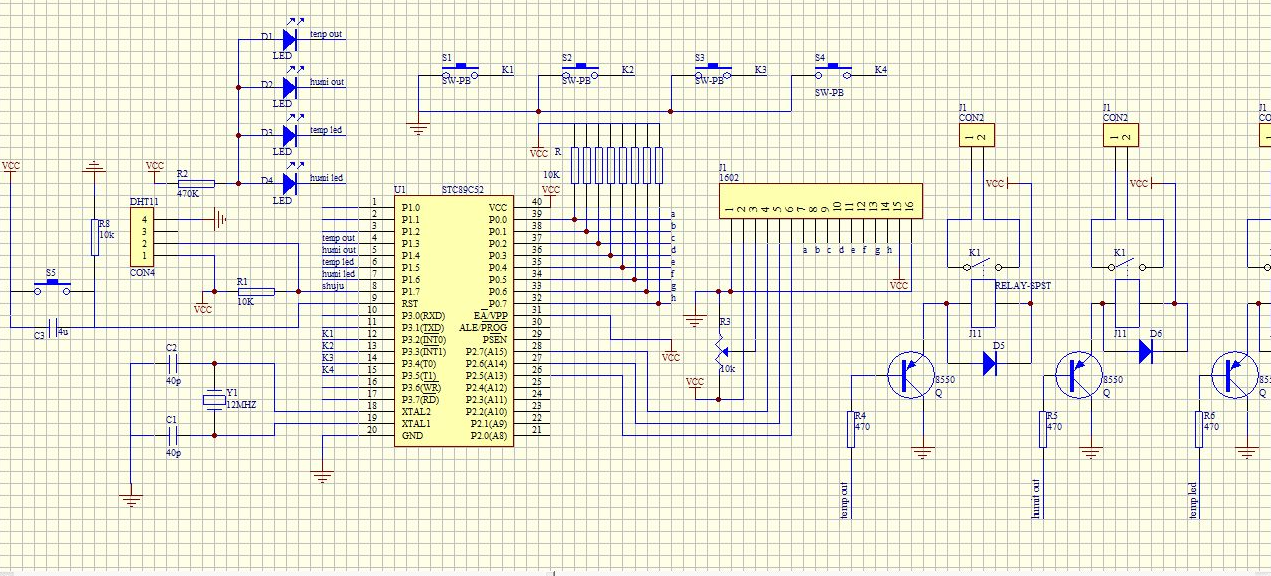Talking about the Internal Structure of Single Chip MCU
The single chip microcomputer integrates the main components of the microcomputer, CPU, memory, input/output interface, etc. on a very large scale integrated circuit chip.
It consists of a CPU system, program memory, data memory, various I/O ports, basic functional units (timers/counters, etc.).
1. CPU systemThe CPU system includes a CPU, a clock system, a reset, and a bus (BUS, that is, a common channel of signals) control logic.
(1) CPU
The CPU in a single-chip microcomputer is different from the CPU in a microcomputer. It is characterized by control-oriented, embedded-oriented systems, and single-chip oriented.
(2) Clock system
The clock system is used to generate the clock signal required for the operation of the microcontroller. It must meet the clock requirements of the CPU and each unit circuit in the microcontroller. The operating frequency of the clock oscillator is generally 1.2 to 12 MHz.
(3) Reset circuit
The reset circuit should meet the requirements of power-on reset and signal control reset.
(4) Bus control logic
The bus control logic should meet the CPU's control requirements for the internal bus and the external bus.

The program memory is a read only memory (ROM) that is used to cure the microcontroller application and some table constants. The MCU manufacturers form different structure types of the MCU according to the different structures of the internal program memory of the MCU.
(1) Mask ROM type (2) EPROM type (3) ROM less type (4) OTP ROM (5) Flash ROM (MTP ROM) type
The first three types of program memory microcontrollers are early products, and EPROM and ROM Less types are currently used less frequently.
3. Data memory RAMRAM is a readable and writable memory, also called random access memory. The internal RAM of the microcontroller can be used as a data buffer in addition to the working register, bit flag and stack area to store the input data or the result of the operation.
Since the MCU is mainly oriented to the measurement and control system, the internal data storage capacity of the MCU is small, usually no more than 256 bytes, and both use SRAM (StaTIc Random Access Memory).
4. Various I/O portsThe I/O port is the input and output interface of the computer (T is the input, and O is the output). The I/O ports in the microcontroller are the auxiliary/output pins of the chip. These I/O ports can be divided into the following types:
(1) Bus input/output port
(2) User I/O port. Input/output control by the user for external circuitry.
(3) The input/output port of the internal function of the microcontroller. For example, the timer/counter is counted in, the external interrupt source is added, and so on.
In order to reduce the number of pins of the microcontroller, the general I/O port has a duplex function. For example, when the external bus is not used, the bus port can be sent to the user for the auxiliary/auxiliary port.
The structure of the I/O port can also be divided into parallel I/O ports, that is, multi-bit data is output or input together. This form transmits data quickly but uses many pins. Another type of I/O port is called a serial I/O port, that is, the transmitted data is a sequential output or input. This form can greatly reduce the number of pins of the I/O port, but the data is transmitted slowly.
5. Basic functional unitThe basic function unit is some circuits set to meet the measurement and control functions of the single-chip microcomputer. It is some basic circuits used to improve and expand the computer functions, such as timer/counter, interrupt system, etc. Timers/counters can be very useful in practical applications, such as precise timing or counting external events.
Back Seat Headrest Pillow Phone Holder
Back Seat Headrest Pillow Phone Holder,Samsung Tablet Car Holder Back Seat,Car Back Seat Organiser With Tablets,Car Back Seat Tablet Holder
Ningbo Luke Automotive Supplies Ltd. , https://www.car-phone-holder.com